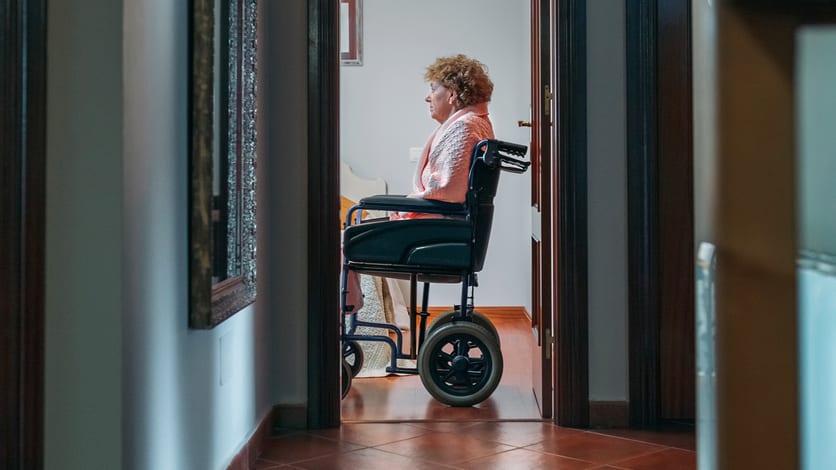
There have been a number of new changes and aged care reforms recently. The latest was over the weekend, when it was announced that re-accreditation visits would, from now on, go unannounced.
But one that many carers and families are continuously pushing for is the mandated staffing ratios of aged care staff.
With one aged care staffed shared so thinly across a large number of residents, means that the staff member is rushed to work and each resident do not get the adequate care they need.
On average, aged care residents are receiving 2 hours 50 minutes of care per day from nurses and carers, well below the 4 hours 18 minutes they should be getting.
“When my husband went into aged care it was an absolute shock, I was quite horrified by what I saw. I saw a degree of neglect. The lack of staff amounts to abuse,” says Margaret, a widow whose husband was in a nursing home.
“There’s not enough staff and it’s extremely stressful. Things are so much worse than people realise,” says Cherise, a registered aged care nurse, who also had her Grandmother in a nursing home.
“I feel like sometimes I am on a production line, you don’t get enough time to properly care for residents,” says Julie, an AIN working in aged care.
Those involved in the aged care system describe how, in the absence of mandated ratios, dangerously low-levels of nurse and carer staffing continue to put the lives of the elderly at risk.
The Australian Nursing and Midwifery Federation (ANMF) finds that this is a serious issue that needs to be dealt with immediately.
ANMF is, therefore, sending a message to all federal politicians with a new public awareness campaign calling for staff ratios in aged care to be legislated as a matter of urgency – to protect vulnerable, older nursing home residents who are the victims of Australia’s crisis in aged care.
The Acting Federal Secretary of the ANMF, Annie Butler, says that the lack of staff ratios is “ a national disgrace. It’s a crisis that shames us.”
“Our aged care system has been ignored by governments for far too long.”
“Understaffing means that often just 1 registered nurse has to manage the care for sometimes over 100 residents on a night shift or that one carer has to feed, bathe, dress and mobilise 16 residents in less than an hour,” says
“Nurses and carers are struggling, they’re run off their feet. They are doing the best they can but they can’t provide the level of care they want to. It’s just not possible.”
“Australia has strict ratios for childcare, which is only fair and reasonable, but not for aged care. The result is a system where 1 registered nurse may be responsible for managing the care of more than 100 residents. How is this justifiable?”
The campaign highlights how there are fewer and fewer nurses and carers to care for an increasing number of nursing home residents with increasingly complex medical needs.
From 2003 to 2016, there was a 13% reduction in trained nursing staff working full-time in aged care facilities and over the past 13 years there has been a 400% increase in preventable deaths in nursing homes, from falls, choking and suicides.
“It’s time elderly Australians get the care they deserve. Our politicians must stand up for elderly Australians and make ratios law now,” says Butler.
The ANMF is also supporting the actions of Senator Derryn Hinch, who has introduced a private member’s bill, the Aged Care Amendment (Ratio of Skilled Staff to Care Recipients Bill) 2017, and is calling on all political parties to support ratios for aged care.
What do you have to say? Comment, share and like below.
